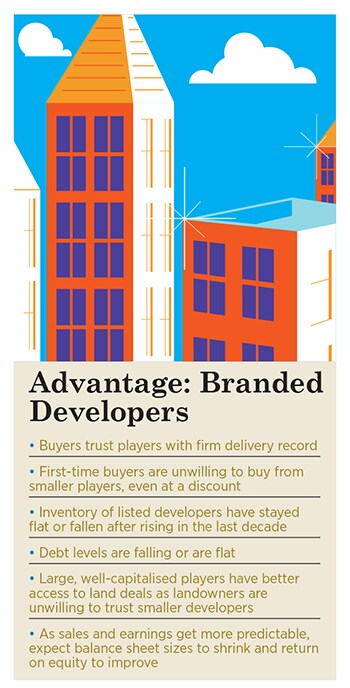
Goliaths of real estate are winning the pandemic economy
Real estate was expected to lose favour in the Covid-19 world, instead established brands and large players with better recall, online presence, and often those that are listed on the bourses are finding more takers than smaller players

Hiranandani Gardens, in Powai, Mumbai. Niranjan Hiranandani, managing director of the Hiranandani Group, says buyers have more faith in larger players doing quality work. Photo by Neha Mithbawkar for Forbes India
In the months leading up to the pandemic, buyers had gone short on residential real estate. Deals were going abegging and prices hadn’t risen for years. Most large developers had to deal with an inventory pile-up.
While conventional wisdom would have argued for a worsening of demand post pandemic, the real estate market has, instead, bisected. Large organised developers have seen their share of the pie increase, while smaller players with lesser access to capital have struggled.
“There is definitely more trust and faith in larger players who have been doing quality work,” says Niranjan Hiranandani, managing director of the Hiranandani Group. An important reason for this has been the access to finance that larger developers have. In the past, residential real estate relied on pre-sales to raise money that financed construction. Post the implementation of the Real Estate (Regulation and Development) Act, a key financing tool for smaller developers has been disallowed.
While this was a trend that existed even before the pandemic, it has accelerated since, says Hiranandani. As people look for larger residences and start their property search online, it is the better-known names, with immediate brand recall, who have benefited.
(This story appears in the 30 November, -0001 issue of Forbes India. To visit our Archives, click here.)









